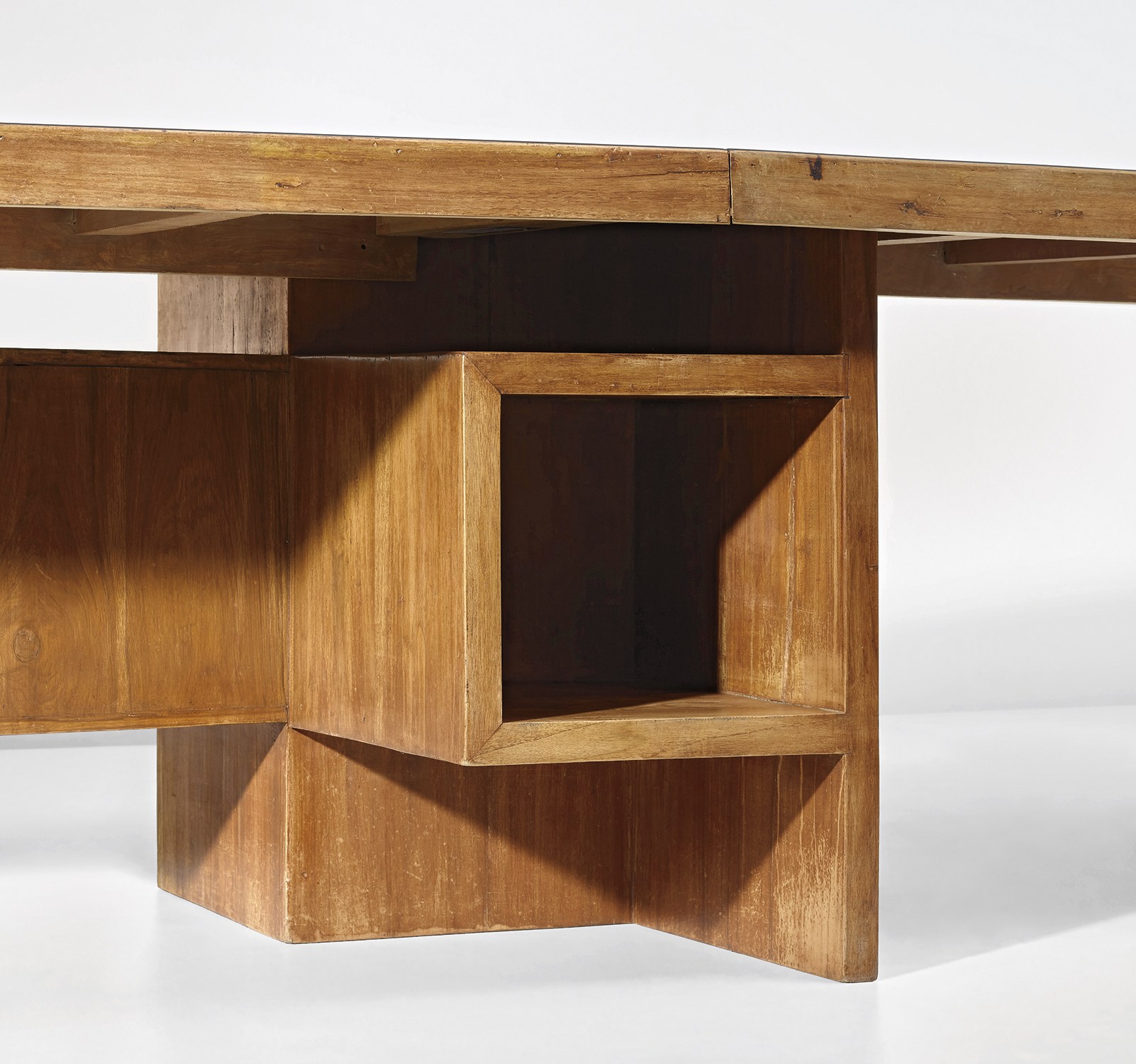



87
Le Corbusier
Important and rare demountable Minister’s desk, model no. LC-TAT-07-A, designed for the High Court and the Secrétariat, Chandigarh
1955-1959
Teak-veneered wood, teak.
75.5 x 364.1 x 136.7 cm (29 3/4 x 143 3/8 x 53 7/8 in.)
Full-Cataloguing
Le Corbusier designed the present desk for the High Court and the Secrétariat buildings in Chandigarh, the newly formed capital of Punjab. Named the architectural advisor and master planner of the monumental project, Le Corbusier envisioned a horizontal city, set against the distant Himalayan mountains, which functioned as a government capital while providing its inhabitants modern amenities and, importantly, protection from the commanding Indian sun and monsoon rains. In addition to the overall city planning, Le Corbusier’s responsibilities included the designs for the Capitol Complex and the surrounding park, for which he proposed four buildings (only three were realised, the High Court, the Secrétariat and the Assembly) and six monuments, which he conceptualised as being constructed within three greater squares on the site. Through the varied use of concrete, Le Corbusier created a sculptural composition within the Capitol defined by geometry and asymmetry, as illustrated by his signature use of brise-soleil. The High Court and the Secrétariat buildings’ brise-soleil not only served functional requirements, a response to the extreme climate, but imposed a unified structure across the buildings’ large façades. Comparing Le Corbusier’s designs to those of Sir Edwin Lutyens’ for New Delhi, the British architect Jane Drew, who worked on Chandigarh, observed, ‘Le Corbusier uses asymmetry and concave forms controlled by a rectilinear basis as opposed to Lutyens’ convex dome forms and the imperialism of symmetry. Both have felt the need for highly dramatic sculptural forms for the strong sunlight to illuminate’ (Jane Drew, ‘Chandigarh Capital City Project’, Architects’ Year Book 5, London, 1953, p. 57). This emphasis on form and material extends to the architect’s furniture designs for Chandigarh, which Le Corbusier conceived of as part of the architecture and executed using local materials and craftsmen. The monumental scale of the present demountable desk reflects that of the government buildings for which it was intended, positioned to anchor and structure the open space. The table top comprises two parts that form an open angle, supported by three ‘angle’ type legs, allowing for transport and simple assembly. The central support incorporates two open storage components, which recall in both functionality and form the sculptural voids of the buildings' façades, underscoring the city’s constructed structural rhythm.